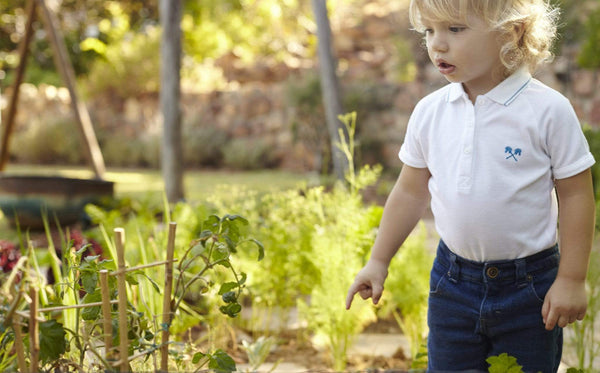Real toys versus screen time?

Planes, trains and automobiles – why old-fashioned toys come up trumps!
Reading time about 4 minutes.
We have all heard the warnings, read the reports and felt the guilt (and relief) as we hand over the iPad (again) to our toddler to hush ‘em up in the car, trolley or restaurant. Playing with any form of electronics is a big no-no for children under two, and should be closely monitored and limited for 2-6 year olds, and children aged 6-18 should only have half an hour a day, say the American Academy of Pediatrics, the Canadian Paediatric Society and the UK government. In January 2015, Taiwan went as far as to ban the use of electronics for under twos, fining parents £1000 (about R23 000) if they do expose their toddler!
The scientific studies are clear: young children who spend more time playing away from TVs, tablets and smartphones; and more time playing outside and with blocks, push cars and bikes sleep better, perform better at school, tantrum less, are able to socialise appropriately, better able to self-regulate and have better focus and problem-solving skills. They are healthier and happier. And yet… there are very few of us parents who don’t rely on ‘iNanny’ at some point, in fact a 2015 survey found that 850 of the 1000 (85%) parents (of children aged 2-12) surveyed used technology to occupy their children while they get on with other activities. I mean some of it is educational, right?
Pre-primary school teacher, Kate Stamper, shares her insights with us:
Q: Do you think this is a good idea to ban children under two from electronics and why?
A: “As hard as it is – and I know how hard it is, I have a two and four year old – I do think iPads etc. should be avoided where possible. The sensory stimulation provided by these devices is intense, and because young children cannot yet independently manage themselves, they really struggle to self-regulate their responses. However, each child is different and some are able to manage various sensory stimuli differently, so I believe that it is up to the parent to pick up on signs of over-stimulation and change these environments, or avoid them all together.”
Q: Can you tell which children in your classes are exposed to a lot of electronics and those that are not?
A: “Absolutely, mainly in their ability to pay attention and focus on a task. Children who spend a lot of time using these devices need a lot more stimuli to be engaged. Some children are exposed to inappropriate games or programmes and this can be seen through their play choices.”
Q: Do you think old-fashioned toys are better for this age group, or does it not make a difference?
A: “I don’t think it is whether the toys are old-fashioned or modern, but we do need to think about the function the toy provides. For example, it is imperative for young kids to still use gross motor movements and skills as much as possible, so even over-use of simple battery-operated toys can be problematic. Remote control cars and electric train sets that move for a child, do not allow them to create movements, gestures and even role play scenarios themselves. This inhibits discovery skills, thinking and reasoning.
Q: From a teachers point of view, what (if any) other things are children missing out on by playing on electronics instead of simple toys?
A: They aren’t exposed to varying and different play materials, such as sand, dough, water, grass; or wood and plastic, objects with different weights, textures, smells and tastes and this all impacts on tactile and sensory development. Playing on devices offers no, or very limited, opportunities to for big movements that cross the midline (essential for learning to read, write and co-ordination), as they are working in a limited, stationery space. They are not engaging their entire body in play experiences so aren’t working out length, depth and how to manipulate their bodies in space. The more a child is exposed to electronic stimuli, the more dependant they become on heightened stimuli in order to engage and then struggle to concentrate in less stimuli-provoking environments. Perseverance and realistic goal setting is also affected, as gaming and electronics give an immediate result or response that is not always realistic in everyday life.
Q: If you had to recommend just two ‘old-fashioned’ toys that you think every child should be exposed to, have or play with, what would they be and why?
A: A good old push car or train on a figure of 8 track, as the action of pushing the car around the track allows for crossing of the midline; and an old tyre or drum to push (for upper body strength) and to climb through (for developing spatial awareness of body in space) and also balance on (engaging the core).
As an aside…
The following Technology Use Guidelines for children and youth was posted by The Huffington Post in their article: 10 Reasons why handheld devices should be banned for children under the age of 12




















